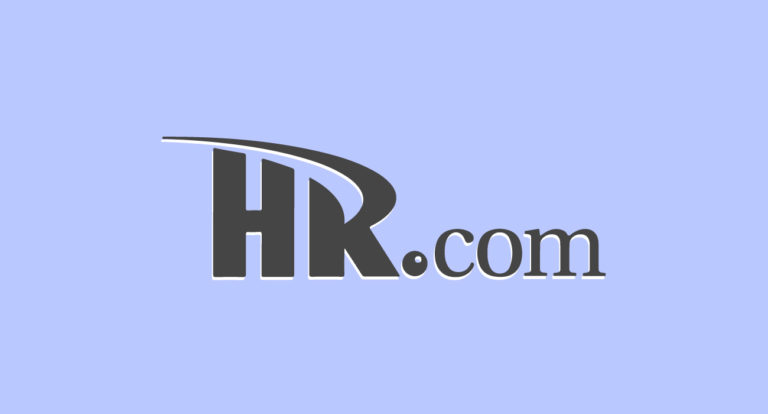The Complete Guide To Employee Check-Ins
Posted by Trakstar • October 17, 2022 (Last modified January 5, 2023) • 7 min read
Running employee check-ins (also known as one-on-one meetings, progress meetings, appraisals, reviews, catch-ups, sit-downs, and so much more, depending on the organization) is something all good managers and leaders should be doing. No matter what you call it or how often you do them, employee check-ins help you keep your employees on track, understand where there may be trouble within the organization, and align your entire team.
Not all companies are going to need employee check-ins at the same cadence. Smaller organizations or organizations that are growing quickly may require weekly check-ins that are scheduled into someone’s calendar. In contrast, other organizations will use sporadic one-on-ones only when they are needed.
The goal is always to keep employee check-ins productive, safe, engaging, and effective in managing performance, partnerships, relationships, and progress. The more open the line of communication is between leaders, managers, and employees, the better the entire organization will be, the faster you will reach OKRs, and the better your relationships will be.
Often, employee check-ins are perceived as casual catch-ups between an employee and their manager. Still, managers often use this time to generate ideas, identify issues, and keep employees engaged.
But how can you make your employee check-ins more effective and valuable? We’ve developed this guide to help you understand employee check-ins and improve your next one.
Types of Employee Check-Ins
There are a few different times to have employee check-ins, and you’ll likely have all of them throughout the employee lifecycle. Employees should know to expect these check-ins, even if they aren’t exactly sure when they’ll have them.
30-Day New Employee Check-In
When done correctly, the onboarding process sets your employees up for success. However, that doesn’t mean you shouldn’t check in with your new employees. A 30-day new employee check-in ensures that your new hire feels comfortable, safe, supported, and successful in their new position.
Use a 30-day check-in to ask questions about the hiring and onboarding process so you can refine it and make it even better. Ask questions about roadblocks the new hire has encountered, any additional training they need, or where they may struggle to fulfill their KPIs.
This check-in doesn’t have to be extremely formal, but it is beneficial, so it’s important to take it seriously.
Employee Performance Check In
An employee performance check-in is just a regular opportunity to touch base with your employees and see how they are doing. These meetings are a little more casual and focus on the day-to-day needs of your team, including their progress, mental health, and focus for the upcoming days.
Think of employee performance check-ins as a way of taking the pulse of your organization without running a formal survey – although that is a fantastic, time-effective way to gauge your organization, department, or team.
Struggling Employee Check In
Do you have employees on PIPs? Sometimes employees will struggle and managers have a chance to step in and make a change in them. An employee check-in is a great way to get insight into why your employee is struggling, how you can support them, and even how to avoid this challenging time in the future.
For managers who have weekly or monthly employee check-ins, you may not need to have a struggling employee check-in, but if you don’t, this can turn things around quickly.
A Manager’s Employee Check-Ins Template
Employee check-ins are usually conducted by a manager or director of a department. These leaders will work with other departments as well as within their own departments to gain information about what’s coming for the organization, how an individual’s personality and performance are impacting the organization as a whole, and specific needs and goals of said employee.
Managers need to take employee check-in questions and systems seriously. It can feel like a “fun” meeting for them, but they are also important for productivity and effectiveness.
Click here to download our employee check-in template.
What To Do Before Employee Check-Ins
Preparing for an employee meeting is one of the most important steps a manager can take to monitor employee performance and make a meaningful contribution to appraisals. Preparedness pays off, and it doesn’t take a long time. Even ten minutes of preparation can make a big difference. By using an employee check-in system or performance management tool, managers should have a centralized location where they can list goals, notes, and important topics.
Before your employee check in, you should:
- Prioritize talking points by gathering information from 360-reviews, current sprints, and meetings
- Review notes taken during the last meeting for follow up
- Review goals to measure progress
By taking these three steps, you’ll better prepare yourself for the meeting.
Employee Check-In Template
If you have frequent check-ins with your employees, you won’t have to follow a rigid template. You’ll be able to pick up where you left off and get deeper on topics that maybe you didn’t have enough time for last time. If you only have employee check-ins every so often, then you might want to follow a template so you cover everything.
Sample Employee Check-In Template for Managers & Leaders
- Start with the small talk and catching up
- Find out what’s going on with your employees and how they are truly feeling
- Use this time to get to know them and make a connection that can help you communicate and understand them
- Be sure to keep this conversation light enough that it won’t set the employee on edge
- Ask your employee for topics
- See what really matters to your employee and what’s on their mind
- This may drive the rest of your conversation or they may come without topics
- Current events & projects
- Ask for updates on specific topics and projects that are pressing
- Discuss challenges or blockers that are preventing your employees from success
- Offer advice or coaching to keep the project going and expedite success
- Determine if you need to set goals or readjust the timeline
- Goal Setting & development
- Talk about any goals your employee has set and what the progress is
- If your employee has reached their goals, lay out the next step
- Assign learning courses or set objectives for your employee to work on for the future
- Discuss any future growth opportunities or concerns
- Look for mentorship opportunities for younger or newer employees
- Forward Thinking
- Discuss important company or team updates that may impact your employees
- Confirm any succession plans or development
- Ask for 30/60/90 day goals
- Creativity
- Encourage creativity in your employee by asking for any ideas
- Ask about collaboration or areas your employee may want to explore
- Wrap Up
- Ask if your employee has anything else they want to add or share
- Set some objectives to cover next week
Trakstar Perform Makes Employee Check-Ins Easier
If you’re having trouble making your employee check-ins work, it might be time to invest in a performance appraisal system. Our system is designed to work during formal reviews but also during employee check-ins and routine conversations. The Trakstar platform keeps you organized from the moment of hire by enrolling your employees in Trakstar Perform and Trakstar Learn.
Use Hire to transfer job descriptions and duties so that you have everything in one place. The bigger your teams get and the more successful your organization is, the more important it is to hold everyone accountable for their job descriptions.
From your employee check-ins and discussions on goals and development, enroll them in learning courses that help them become better employees and reach higher heights. Build a talent development program that nurtures employees and keeps them in your workforce for a longer period of time.
Building a talent development program is hard, but Trakstar can help you. Through the use of our Trakstar platform, HR leaders are given the tools they need to attract, retain, and engage a workforce that keeps conflicts to a minimum. To learn more about our platform, you can schedule a demo today.
Don't Miss Out on More Great HR Articles!
Subscribe to get the latest, greatest HR and Talent Development content straight to your inbox.


